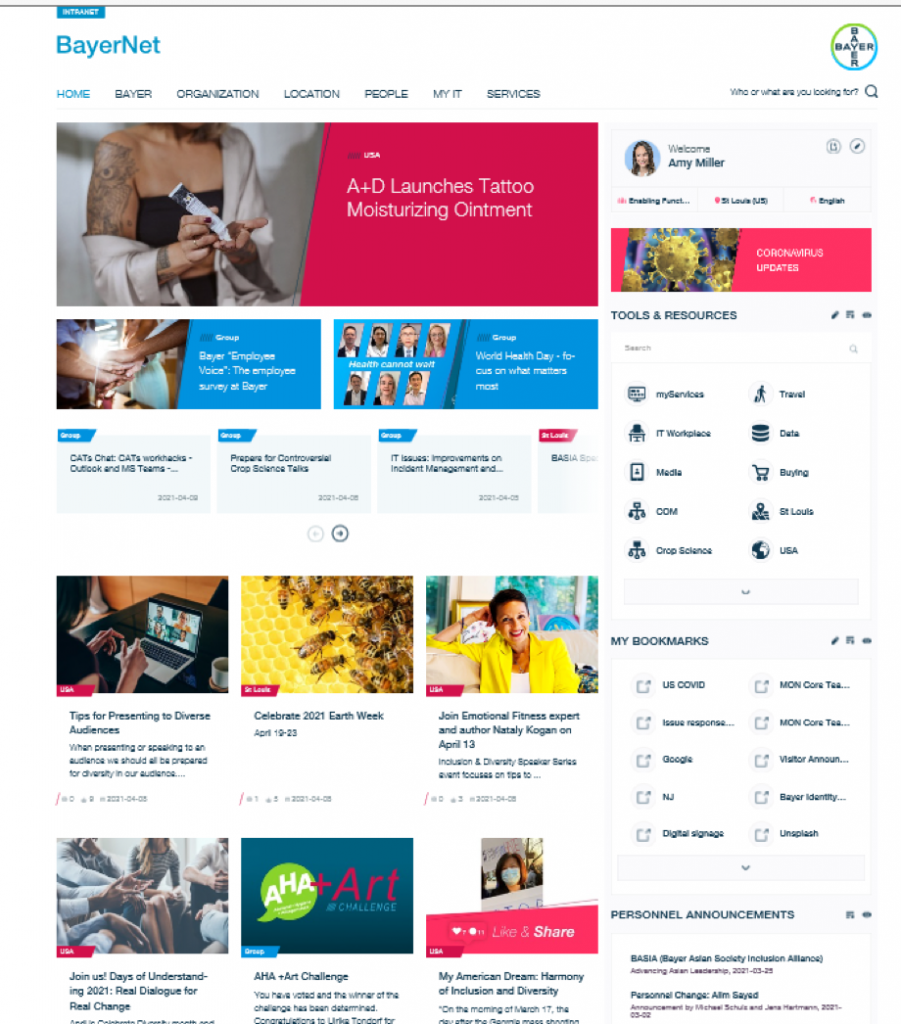If you’re a lucky one, you still have a job, and are working remotely during the various ebbs and flows of Covid. Email and instant messaging (IM) are good tools for communicating one-on-one or to groups but fail to provide enterprise-wide structure and order to the digital workplace. Zoom can be fun, and Teams particularly powerful, when used correctly. But what is the digital glue that binds these tools to the center of the organization? Where is the nexus for the digital workplace?
Enter the intranet, the digital antidote to Covid-driven work isolation: the intranet.
The Covid pandemic has underscored the vital importance and role the intranet has in connecting employees in disparate places, breaking down walks and geographic and cultural distances. The best intranets are those that are gateways to the entire digital workplace (all the digital tools an employee uses during the workday). However, since the financial meltdown in 2008, many organizations have ignored the intranet. I have two active clients that still have SharePoint 2007, others still have SharePoint 2010 and 2013. These are not exceptions to the rule, but sadly, more often the norm, outside of the technology, banking and health sectors. Indeed, there are many great intranets and digital workplaces, many of which have been profiled here or at truly informative conferences such as the Digital Workplace & Intranet Global Forum, Intrateam and Congress Intranet — these are exceptions to the rule.
The truth is the average intranet in larger to medium-size organizations is 8-12 years old. Most fail Prescient Digital Media’s proprietary intranet evaluation scoring assessment on a scale of 1-10. Prior to working with a client, the average intranet scores about a 3.25 out of 10; most leading intranets, those showcased at the above events, score in the range of 7.5 – 9 (no we’ve never seen an intranet score close to 10).
How many of these organizations have a website that is 8-12 years old, or scores a 3 or 4 out of 10? None. The sad truth is employees are not as important as potential customers, or the average Joe website visitor; too many older-generation executives view the intranet as a cost center, a necessary evil.
During the pandemic, I’ve seen one of two corporate responses to an organization’s failing or subpar intranet by larger organizations:
- Invest and upgrade the intranet — Covid has reinforced the need to better connect employees.
- Ignore the intranet, save the money — Covid has underscored the need to further reduce expenses.
Some intranet clients have halted an intranet project, some have seen the need and made it a priority.
Now is the perfect time to invest in the intranet, invest in the digital workplace and tools that better connect employees. The intranet is the ideal tool to provide structured access to files, policies, procedures, sales and marketing collateral, employee phone numbers, HR and finance tools and apps, and communications and social tools that connect people that cannot connect in-person.
The intranet is not a panacea for a failing company or failing culture. Nor will the intranet replace the value of face-to-face meetings. The intranet, when it works best, is the gateway or portal to all of the digital workplace and a digital ecosystem to the organization as a whole. The intranet can greatly improve employee productivity, engagement, communications, operations, and even sales and marketing. But an intranet cannot fix a broken culture, a broken business model, and it will never replace humans.
A great intranet however can break down organizational silos and the geographic distances and barriers that separate knowledge employees who are increasingly separate and remotely isolated, particularly during Covid. A great intranet connects, informs, and enhances organizational culture and business effectiveness — whether its Covid or the physical silos of a disparate, decentralized organization.
Keep reading….
Intranet (Trust) for Communicators
